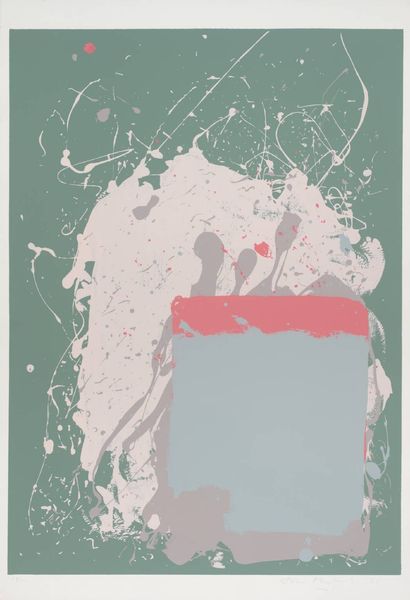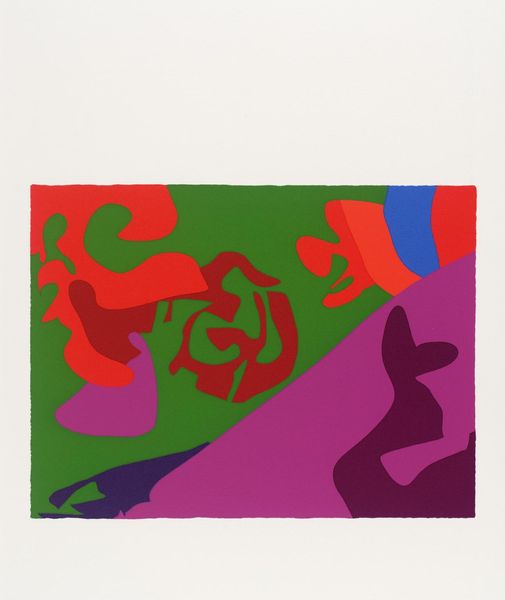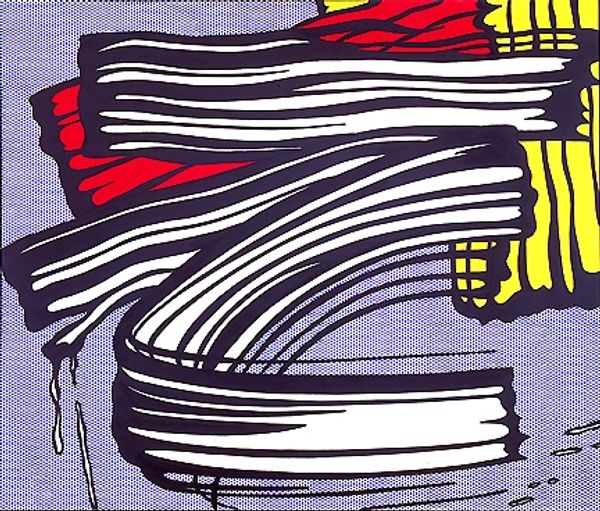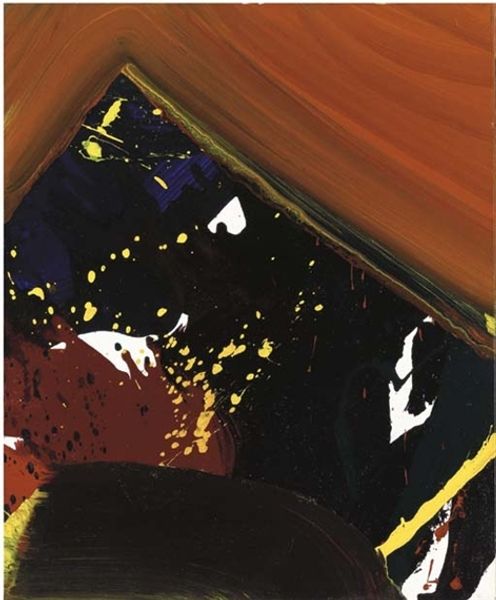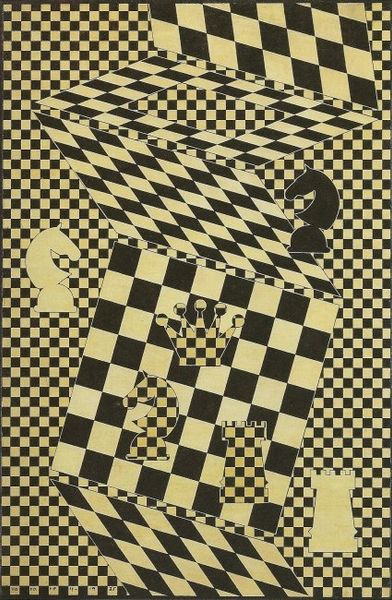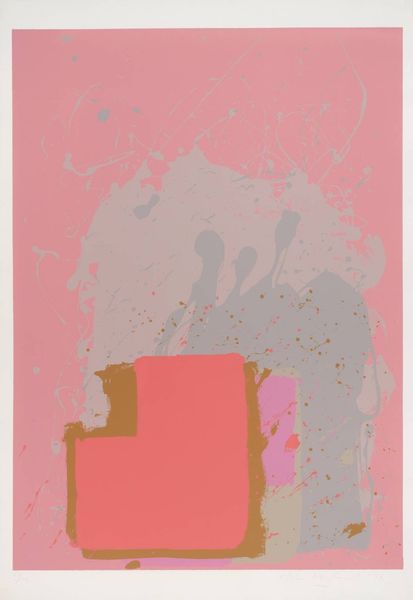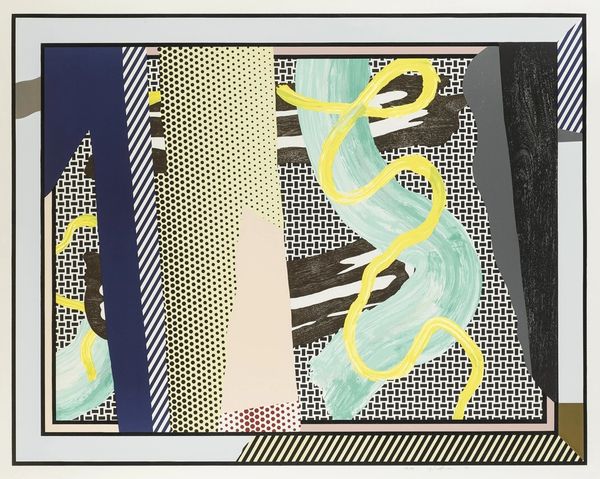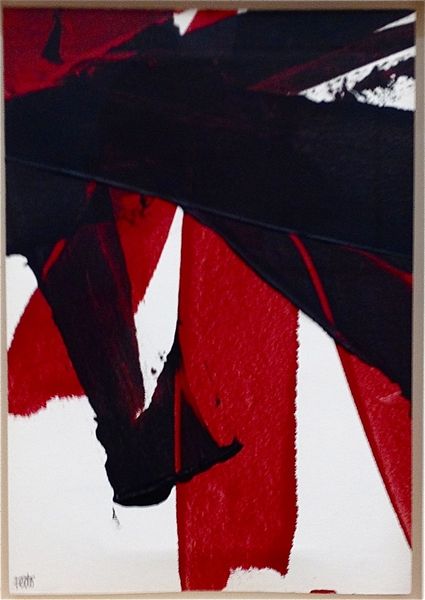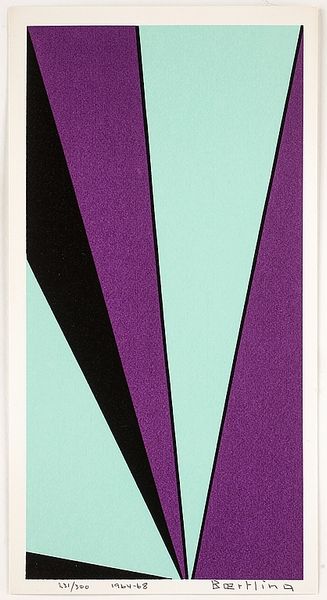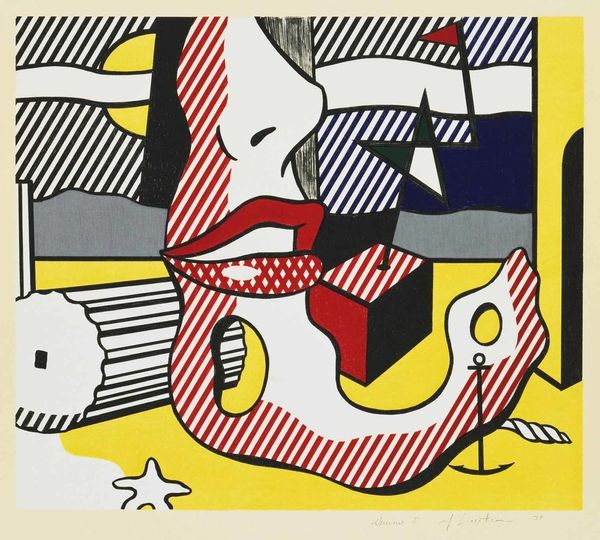
acrylic-paint
#
pop art-esque
#
popart
#
pop art
#
acrylic-paint
#
geometric
#
geometric-abstraction
#
pop art-influence
#
abstraction
#
pop-art
#
line
#
hard-edge-painting
Copyright: Ronald Davis,Fair Use
Curator: This piece before us, titled "Pier-Peer," was crafted in 1963 by Ronald Davis. It's an acrylic on canvas, showcasing a really fascinating example of hard-edge painting. Editor: Wow, my first impression is one of delightful disorientation. It feels almost like a blueprint gone gloriously haywire. The checkerboard patterns juxtaposed with those curving lines are throwing me for a loop, in the best possible way. Curator: Absolutely. Davis was quite involved with geometric abstraction, deeply rooted in the aesthetics of hard-edge painting and burgeoning pop-art movements, especially prevalent on the West Coast at the time. His innovative manipulation of perspective creates optical illusions challenging traditional representation. Editor: The pop-art influence is undeniable, especially in the use of high contrast colors and flat planes. I wonder what social commentary, if any, Davis intended with this piece. Is it a reflection on consumerism, perhaps? Curator: The painting comes from a fascinating period. Think about early 1960s America: immense cultural shifts, challenges to societal norms... Hard-edge painting became a visual language for reflecting these tensions and the shift towards a more technologically mediated world. Its clean lines and calculated compositions offered a visual alternative to the messy realities. Editor: That context helps sharpen my understanding. Those meticulous lines and contrasting colours, rather than creating harmony, seem to highlight fragmentation, almost like a world striving for order but constantly disrupted. The checkerboard particularly strikes me as an indicator for order/disorder and inclusion/exclusion depending on where it’s implemented. Curator: Indeed, this is where the 'politics of imagery' come to light. What visual systems and structures does this remind us of, and how were those historically employed to perpetuate existing social structures. Davis uses formal strategies to destabilize our assumptions about space and reality. Editor: A disruptive beauty, then, forcing us to reconsider the relationship between art, perception, and the social landscape. It’s that tension that really makes this a compelling, resonant work for a modern audience too. Curator: Precisely. It invites a dialogue that transcends mere aesthetic appreciation. Editor: A powerful piece indeed. It offers much food for thought.
Comments
No comments
Be the first to comment and join the conversation on the ultimate creative platform.
